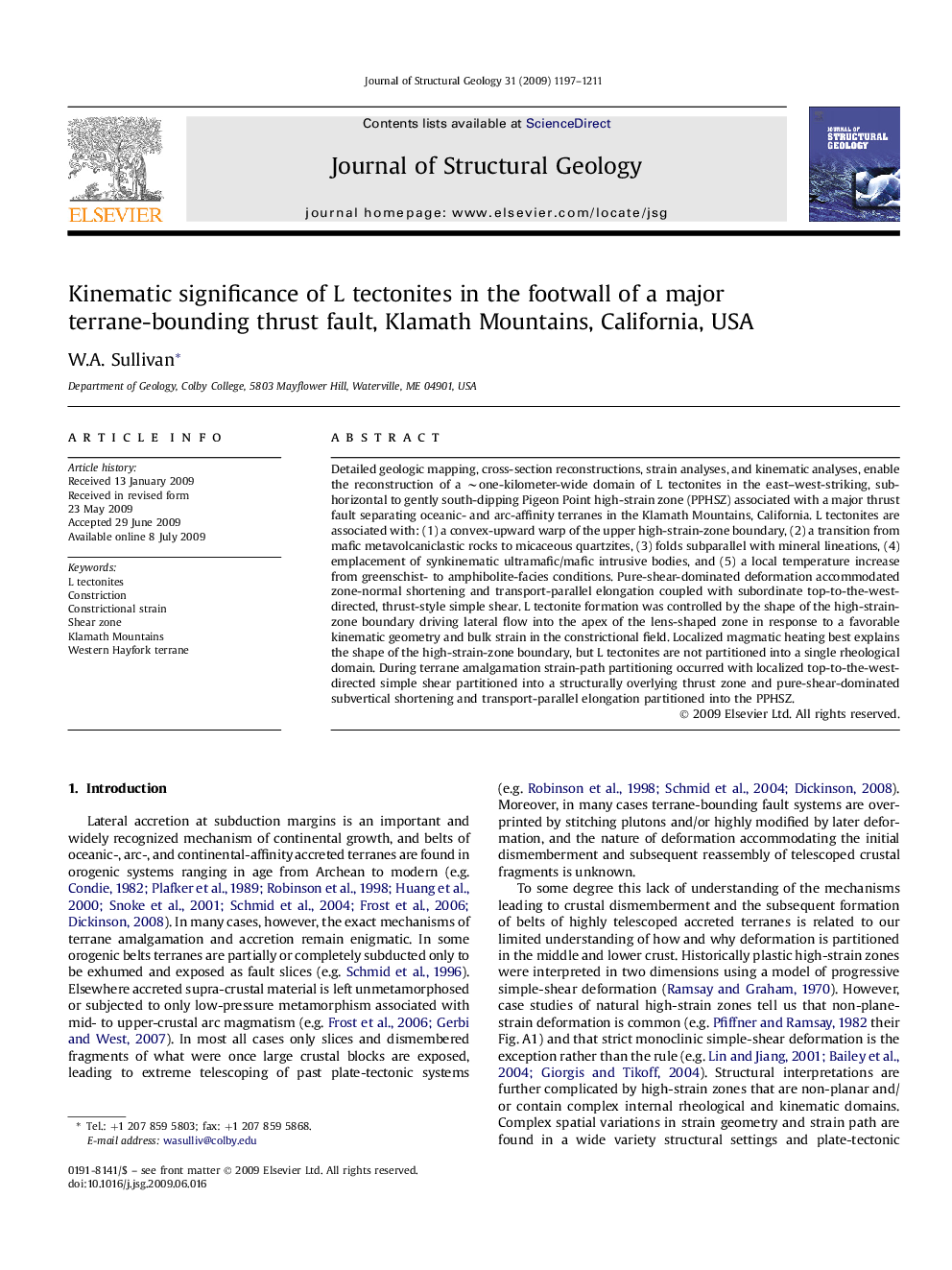| Article ID | Journal | Published Year | Pages | File Type |
|---|---|---|---|---|
| 4733831 | Journal of Structural Geology | 2009 | 15 Pages |
Detailed geologic mapping, cross-section reconstructions, strain analyses, and kinematic analyses, enable the reconstruction of a ∼one-kilometer-wide domain of L tectonites in the east–west-striking, subhorizontal to gently south-dipping Pigeon Point high-strain zone (PPHSZ) associated with a major thrust fault separating oceanic- and arc-affinity terranes in the Klamath Mountains, California. L tectonites are associated with: (1) a convex-upward warp of the upper high-strain-zone boundary, (2) a transition from mafic metavolcaniclastic rocks to micaceous quartzites, (3) folds subparallel with mineral lineations, (4) emplacement of synkinematic ultramafic/mafic intrusive bodies, and (5) a local temperature increase from greenschist- to amphibolite-facies conditions. Pure-shear-dominated deformation accommodated zone-normal shortening and transport-parallel elongation coupled with subordinate top-to-the-west-directed, thrust-style simple shear. L tectonite formation was controlled by the shape of the high-strain-zone boundary driving lateral flow into the apex of the lens-shaped zone in response to a favorable kinematic geometry and bulk strain in the constrictional field. Localized magmatic heating best explains the shape of the high-strain-zone boundary, but L tectonites are not partitioned into a single rheological domain. During terrane amalgamation strain-path partitioning occurred with localized top-to-the-west-directed simple shear partitioned into a structurally overlying thrust zone and pure-shear-dominated subvertical shortening and transport-parallel elongation partitioned into the PPHSZ.
